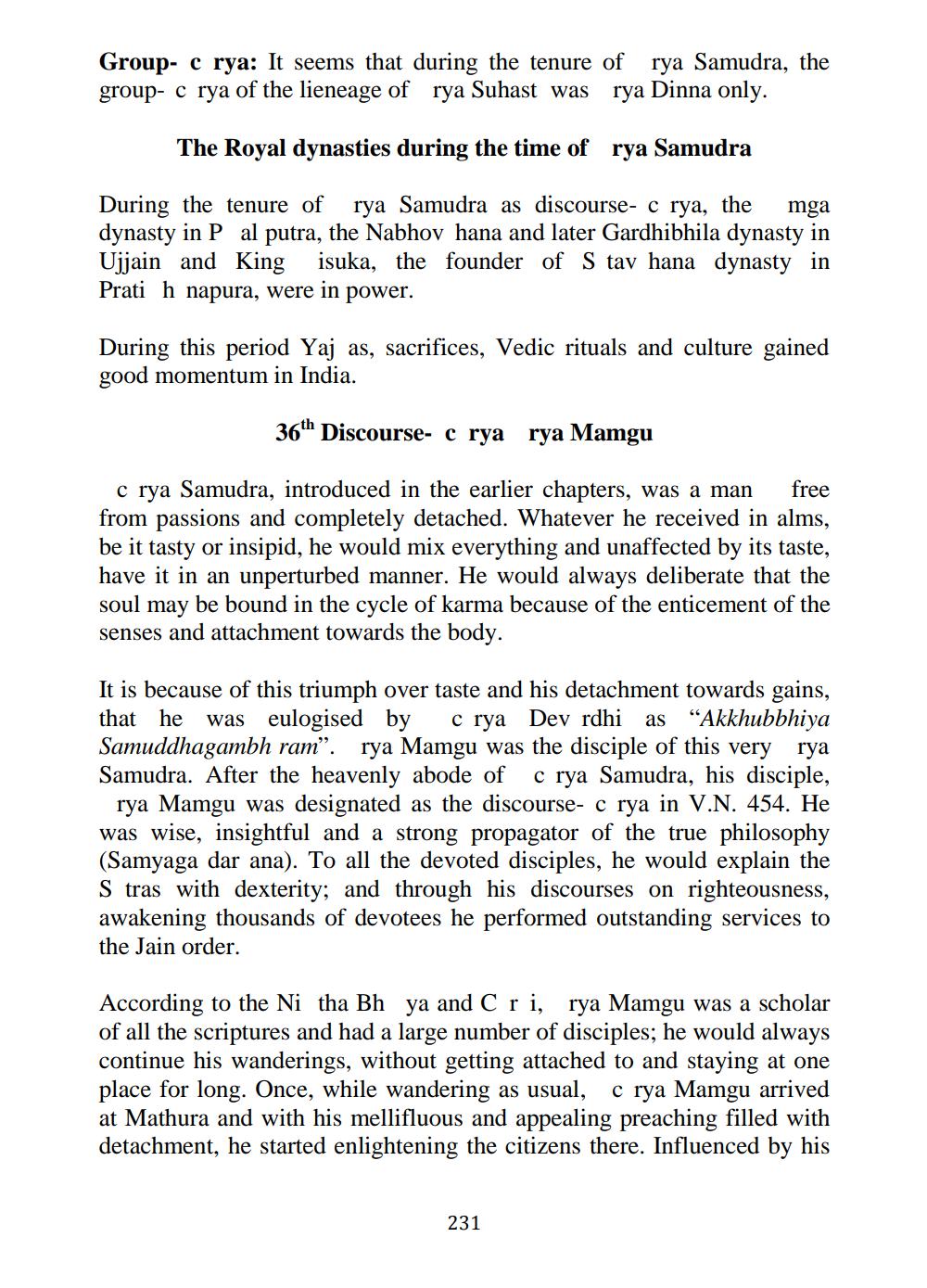________________
Group- c rya: It seems that during the tenure of rya Samudra, the group- c rya of the lieneage of rya Suhast was rya Dinna only.
The Royal dynasties during the time of rya Samudra
During the tenure of rya Samudra as discourse- c rya, the mga dynasty in P al putra, the Nabhov hana and later Gardhibhila dynasty in Ujjain and King isuka, the founder of S tav hana dynasty in Prati h napura, were in power.
During this period Yaj as, sacrifices, Vedic rituals and culture gained good momentum in India.
36th Discourse- c rya
rya Mamgu
c rya Samudra, introduced in the earlier chapters, was a man free from passions and completely detached. Whatever he received in alms, be it tasty or insipid, he would mix everything and unaffected by its taste, have it in an unperturbed manner. He would always deliberate that the soul may be bound in the cycle of karma because of the enticement of the senses and attachment towards the body.
It is because of this triumph over taste and his detachment towards gains, that he was eulogised by crya Dev rdhi as "Akkhubbhiya Samuddhagambh ram”. rya Mamgu was the disciple of this very rya Samudra. After the heavenly abode of crya Samudra, his disciple,
rya Mamgu was designated as the discourse- c rya in V.N. 454. He was wise, insightful and a strong propagator of the true philosophy (Samyaga dar ana). To all the devoted disciples, he would explain the S tras with dexterity; and through his discourses on righteousness, awakening thousands of devotees he performed outstanding services to the Jain order.
According to the Ni tha Bh ya and C ri, rya Mamgu was a scholar of all the scriptures and had a large number of disciples; he would always continue his wanderings, without getting attached to and staying at one place for long. Once, while wandering as usual, c rya Mamgu arrived at Mathura and with his mellifluous and appealing preaching filled with detachment, he started enlightening the citizens there. Influenced by his
231




